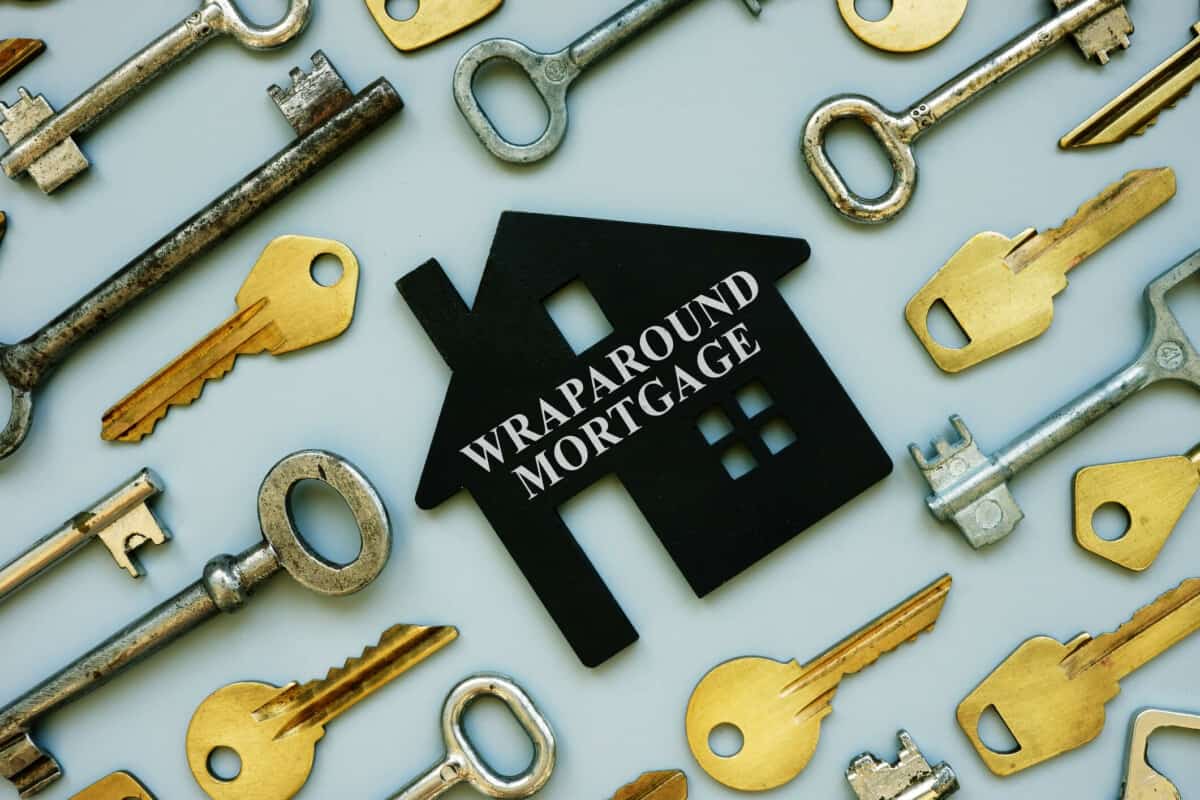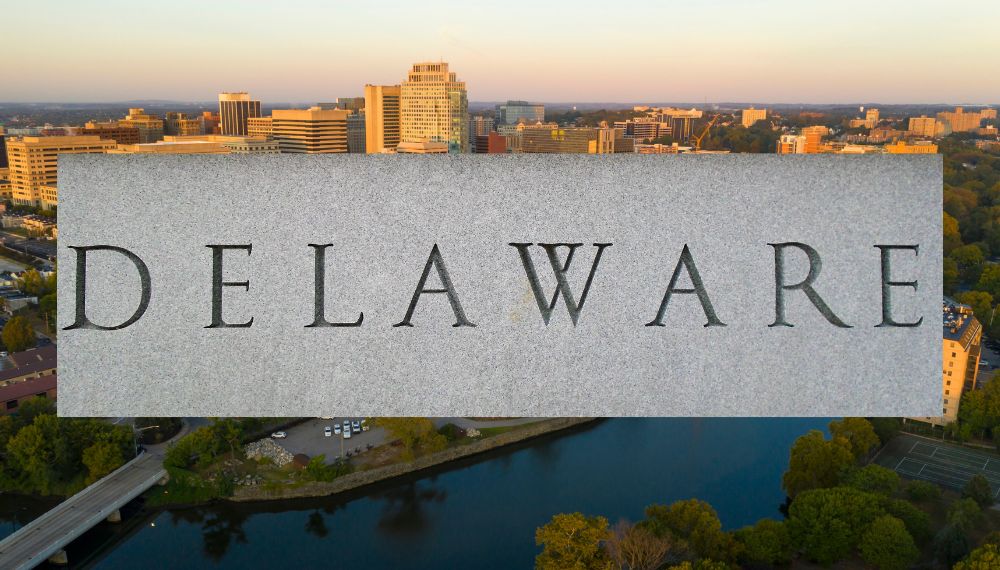What Is a Wraparound Mortgage?
- March 24, 2023
- manoj
- Category: Mortgages

If you’re up for a new home or looking to sell your property, you may have encountered the term “wraparound mortgage” in your research. But what exactly is a wraparound mortgage, and how does it work?
Simply put, a wraparound mortgage is a type of financing that allows a buyer to purchase a property from a seller without obtaining a traditional mortgage from a bank. Instead, the seller acts as the lender and wraps their existing mortgage around the new one, allowing the buyer to pay directly to the seller.
Wraparound mortgages can be an attractive option for buyers and sellers, offering unique advantages and disadvantages compared to other types of financing.
In this post, we’ll dive deeper into what wraparound mortgages are and explore some of the key considerations you should consider when deciding whether this type of financing is right for you.
So, let’s explore the world of wraparound mortgages together!
Defining Wraparound Mortgage
To fully understand what a wraparound mortgage is, it’s essential first to define a few key terms:
- Mortgage: A loan used to purchase a property secured by the property itself.
- Lender: The entity that provides the mortgage loan to the buyer, often a bank or financial institution.
- Borrower: The person or entity that receives the mortgage loan and is responsible for making payments.
Now that we have those terms defined, we can dive into what a wraparound mortgage is.
It is a type of financing where a buyer takes out a new kind of mortgage from the seller, who is also the holder of an existing mortgage on the property. In simple words, the new mortgage “wraps around” the mortgage that existed before, which means that the buyer makes payments to the seller, who in turn makes payments to their lender.
Here’s an example to illustrate how this works: Let’s say that a seller has an existing mortgage on their property for $200,000, but they’re willing to sell the property to a buyer for $300,000. Rather than having the buyer take out a traditional mortgage for $300,000, the seller offers a wraparound mortgage for $100,000. The buyer then makes payments to the seller for the new $100,000 mortgage while also making payments to the seller’s lender for the remaining $200,000.
One of the key differences between a wraparound mortgage and other types of financing is that it doesn’t require the involvement of a traditional lender, such as a bank. Instead, the seller acts as the lender and can offer more flexible terms and potentially faster closing times.
Structure of a Wraparound Mortgage
As we mentioned earlier, a wraparound mortgage involves the seller offering to finance the buyer rather than the buyer obtaining a traditional mortgage from a bank. In a wraparound mortgage, the seller acts as the lender and extends credit to the buyer, who makes payments to the seller directly.
To structure a wraparound mortgage, the seller will typically take the following steps:
- Determine the existing mortgage balance: The seller will need to determine the amount remaining on their mortgage, which will be “wrapped” by the new mortgage.
- Negotiate the terms of the new mortgage: The seller and buyer will need to agree on the amount of the new mortgage, the interest rate, and other terms, such as the length of the loan and any prepayment penalties.
- Draft the mortgage documents: The seller will need to draft the legal documents for the new mortgage, including a promissory note and a mortgage or deed of trust.
- Close the transaction: The seller and buyer must sign the mortgage documents and other closing paperwork, and the new mortgage will be recorded with the county recorder’s office.
Who is Involved?
In a wraparound mortgage, there are typically three parties involved:
- The seller: The existing mortgage holder who is offering the new financing.
- The buyer: The person or entity purchasing the property and receiving the new financing.
- The lender: The entity that holds the existing mortgage that is being “wrapped” by the new mortgage.
Payments
In a wraparound mortgage, the buyer pays directly to the seller for the new mortgage while the seller continues to pay their lender for the existing mortgage. It means the buyer must trust that the seller is using their payments to continue making payments on the existing mortgage.
It’s also worth noting that in some cases, the seller may require a balloon payment at the end of the loan term, which means that the buyer will need to pay off the remaining mortgage balance in full at that time.
Advantages and Disadvantages of Wraparound Mortgage
Wraparound mortgages can offer buyers and sellers some unique advantages but also have significant risks and drawbacks. Here are some key considerations:
Advantages for Sellers
- Potential for higher returns: Since the seller is acting as the lender, they may be able to charge a higher interest rate than they would earn on other types of investments.
- Increased flexibility: A wraparound mortgage can allow the seller to sell their property more quickly and with more flexible terms than they might be able to with a traditional sale.
- Reduced closing costs: Because there is no need for a traditional mortgage, the closing costs associated with a wraparound mortgage may be lower than in a traditional sale.
Advantages for Buyers
- Easier qualification: A wraparound mortgage may be easier to qualify for than a traditional mortgage, particularly if the buyer has less-than-perfect credit or a limited down payment.
- More flexible terms: A wraparound mortgage can offer more flexible terms than a traditional mortgage, allowing buyers to negotiate a lower interest rate or other favorable terms.
- Faster closing: Since there is no need to go through a bank or other lender, a wraparound mortgage can often close more quickly than a traditional mortgage.
Disadvantages
- Risk of default: Because the seller acts as the lender, there is a greater risk of default if the buyer cannot make their payments. It can lead to foreclosure and potentially significant financial losses for both the seller and the buyer.
- Legal complexities: A wraparound mortgage involves a complex legal arrangement, and both parties need to understand the terms of the agreement and the legal requirements for the transaction.
- Lack of transparency: Because the seller continues to make payments on their mortgage, the buyer may need more visibility into the mortgage status or how the seller uses their payments.
Real-Life Situations Where Wraparound Mortgages Can Be Useful
Wraparound mortgages can be a valuable tool in various real estate transactions. Here are some real-life examples where a wraparound mortgage might be used:
Example 1: Low Credit Score Buyer
Jane (Imaginary person) is a first-time homebuyer with a low credit score. She finds a property she loves but needs help getting approved for a traditional mortgage. The seller offers to finance the sale with a wraparound mortgage, allowing Jane to purchase the property with more flexible terms and lower qualification requirements.
Example 2: Capital Gains Tax Avoidance
John (Imaginary person) is a real estate investor looking to sell a rental property he has owned for many years. He has a significant amount of equity in the property and wants to avoid paying capital gains taxes on the sale. He offers to sell the property to a buyer with a wraparound mortgage, allowing him to receive payments over time and spread out his capital gains tax liability.
Example 3: Non-Qualified Buyer
Sara (Imaginary person) is a self-employed business owner who has difficulty qualifying for a traditional mortgage due to her irregular income. She finds a property she wants to purchase, and the seller offers to finance the sale with a wraparound mortgage. The flexible terms and lower qualification requirements allow her to purchase the property and build equity over time.
Example 4: Investment Property Sale
Mark (Imaginary person) is an investor who owns a rental property he wants to sell. He offers to finance the sale with a wraparound mortgage, allowing the buyer to purchase the property with more flexible terms and lower qualification requirements. The seller earns a higher return on his investment, and the buyer can purchase the property without needing a traditional mortgage.
Comparison of Wraparound Mortgage with Other Mortgages
Wraparound mortgages are just one of several financing options buyers and sellers can use to facilitate real estate transactions. Here’s how they compare to some other common forms of financing:
Traditional Mortgages
A traditional mortgage is a loan issued by a bank or other financial institution to finance the purchase of a property. Unlike a wraparound mortgage, a traditional mortgage requires the buyer to make a down payment and qualify for the loan based on their credit score and other financial criteria. Traditional mortgages typically have fixed or adjustable interest rates and are paid off over time.
Bridge Loans
A bridge loan is a short-term loan used to bridge the gap between purchasing a new property and selling an existing property. Bridge loans are typically secured by the existing property and have higher interest rates than traditional mortgages. Unlike a wraparound mortgage, a bridge loan is a separate loan paid off when the existing property is sold.
Seller Financing
Seller financing is a financing arrangement in which the seller of a property provides financing to the buyer. Like a wraparound mortgage, seller financing can provide more flexible terms and lower qualification requirements than a traditional mortgage. However, seller financing typically involves a larger down payment and may have a higher interest rate than a wraparound mortgage.
Comparison Table
| Wraparound Mortgages | Traditional Mortgages | Bridge Loans | Seller Financing | |
| Definition | Financing that includes the existing mortgage and additional funds provided by the seller | Financing obtained from a bank or other lender that uses the property as collateral | Short-term financing used to bridge a gap between the purchase of a new property and the sale of an existing property | Financing provided by the seller rather than a traditional lender |
| Interest Rates | Usually higher than traditional mortgages | Can vary depending on the lender and borrower’s creditworthiness | Can be higher than traditional mortgages due to the short-term nature of the loan | Can be higher than traditional mortgages depending on the agreement |
| Approval Process | Typically, easier to obtain than traditional mortgages since they are often between the buyer and seller without a third-party lender involved | Can be more difficult to obtain due to stricter requirements and underwriting processes | Can be easier to obtain than traditional mortgages due to the short-term nature of the loan | Can be easier to obtain than traditional mortgages since they are often between the buyer and seller without a third-party lender involved |
| Down Payment | Often requires a larger down payment than traditional mortgages | Can vary depending on the lender and borrower’s creditworthiness, but usually requires a down payment of at least 20% | Often requires a larger down payment than traditional mortgages | Can vary depending on the agreement between the buyer and seller |
| Risks for Buyer | Buyer takes on the risk of defaulting on both the existing mortgage and the wraparound mortgage | Buyer takes on the risk of defaulting on the mortgage and potentially losing the property | Buyer takes on the risk of not being able to sell their existing property in time to pay off the bridge loan | Buyer takes on the risk of defaulting on the financing provided by the seller |
| Risks for Seller | Seller takes on the risk of the buyer defaulting on both the existing mortgage and the wraparound mortgage | Seller does not usually take on significant risks since the mortgage is held by a third-party lender | Seller takes on the risk of the buyer not being able to sell their existing property in time to pay off the bridge loan | Seller takes on the risk of the buyer defaulting on the financing provided |
Risks and Considerations
When considering a wraparound mortgage, several risks and considerations should be considered. Some of the key ones include:
-
Risk of Default
Like any other loan, there is always a risk of default with a wraparound mortgage. If the buyer cannot make the payments, the buyer and the seller may be at risk of foreclosure.
-
Legal Advice
It is essential to seek legal advice before entering into a wraparound mortgage agreement, as the legal implications of such an agreement can be complex.
-
Proper Documentation
It is also essential to ensure that all the necessary documentation is in place, including a promissory note, a deed of trust or mortgage, and any other legal documents required by state law.
-
Tax Implications
Wraparound mortgages can have tax implications for both the buyer and the seller. It is essential to consult with a tax professional to understand the potential tax consequences of a wraparound mortgage.
-
Due Diligence
The buyer and the seller should conduct due diligence to ensure that the property is worth the agreed-upon price and that the buyer can make the payments.
-
Balloon Payment
Some wraparound mortgages may have a balloon payment at the end of the term, which could pose a risk to the buyer if they cannot make the payment.
-
Non-Assumability
Some wraparound mortgages may not be assumable, which means that the buyer may not be able to transfer the mortgage to a new buyer.
Conclusion
A wraparound mortgage is a unique type of financing that can benefit buyers and sellers in certain situations. It is essential to understand how wraparound mortgages work and to carefully consider the risks and considerations before entering into this type of transaction. While wraparound mortgages may not be the right choice for everyone, they can be valuable in some circumstances.
If you are considering a wraparound mortgage, it is essential to work with a qualified professional who can help guide you through the process and ensure that all legal requirements are met. With proper care and attention, a wraparound mortgage can be a valuable tool for achieving your real estate goals.
FAQs
What is a wraparound mortgage?
A wraparound mortgage is a financing arrangement where the buyer takes out a new mortgage that includes the existing mortgage on the sold property. The seller continues to make payments, and the buyer makes payments to the seller, who then uses those funds to pay the original mortgage.
How is a wraparound mortgage different from a traditional mortgage?
In a traditional mortgage, the buyer borrows money from a lender to purchase a property and pays back the loan in installments over time. In a wraparound mortgage, the buyer takes out a new mortgage that includes the existing mortgage on the sold property. The seller continues to make payments, and the buyer makes payments to the seller, who then uses those funds to pay the original mortgage.
What are the advantages of a wraparound mortgage?
Wraparound mortgages can offer advantages for both buyers and sellers. For buyers, a wraparound mortgage may provide an alternative financing option when traditional mortgages are unavailable, or interest rates are high. A wraparound mortgage can help sellers sell their property more quickly and receive a higher price.
What are the disadvantages of a wraparound mortgage?
Wraparound mortgages also come with risks and drawbacks. For buyers, there is the potential for default if the seller does not continue to make payments on the original mortgage. For sellers, there is the risk that the buyer will default on the new mortgage, which could result in foreclosure and the loss of their investment.




